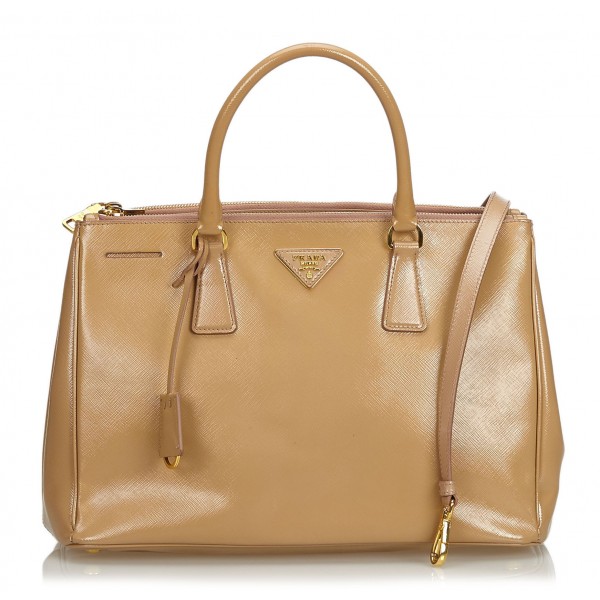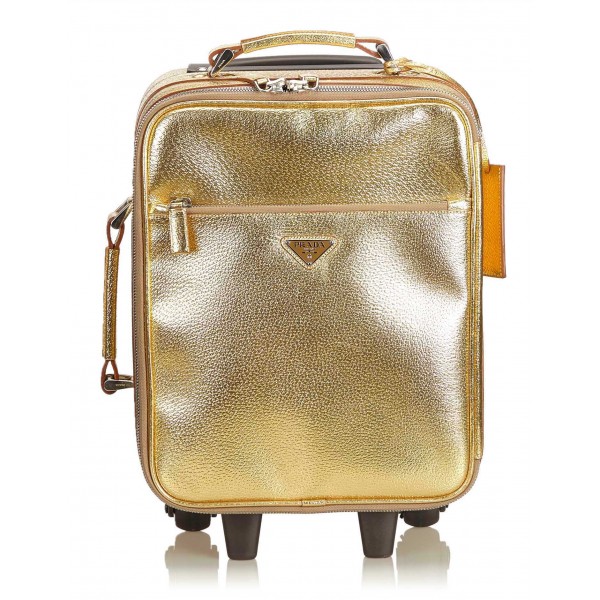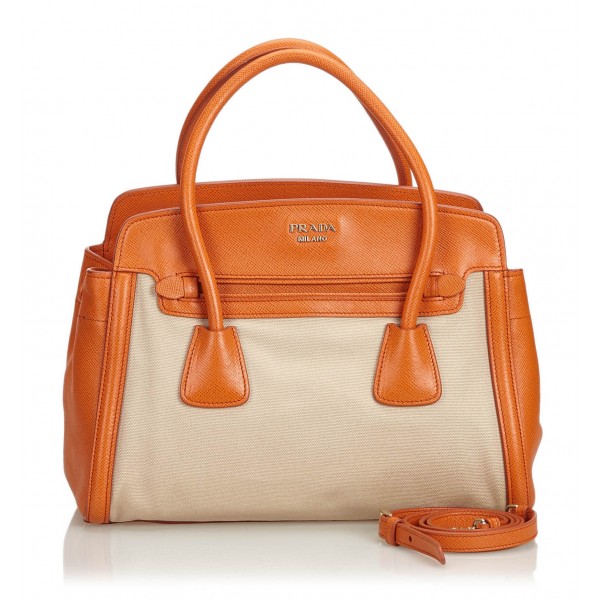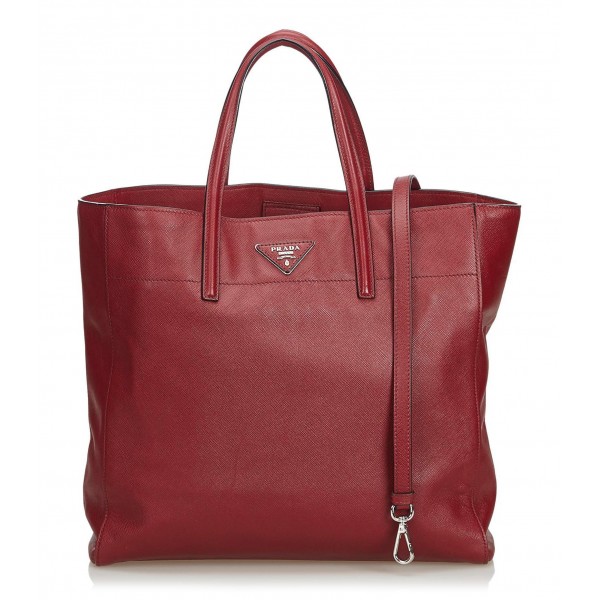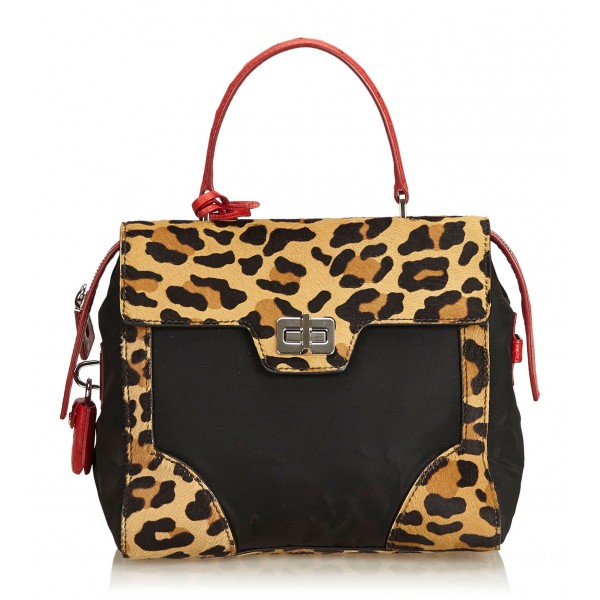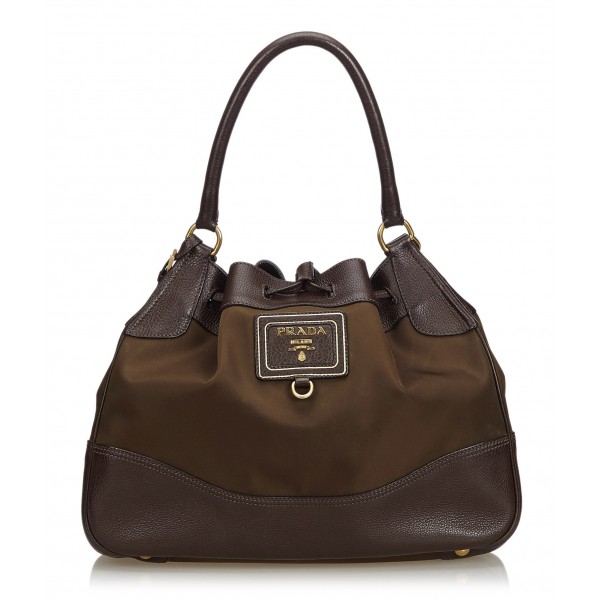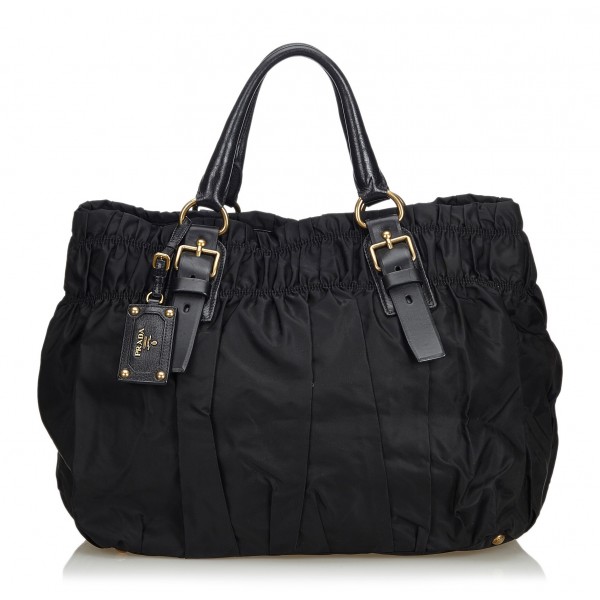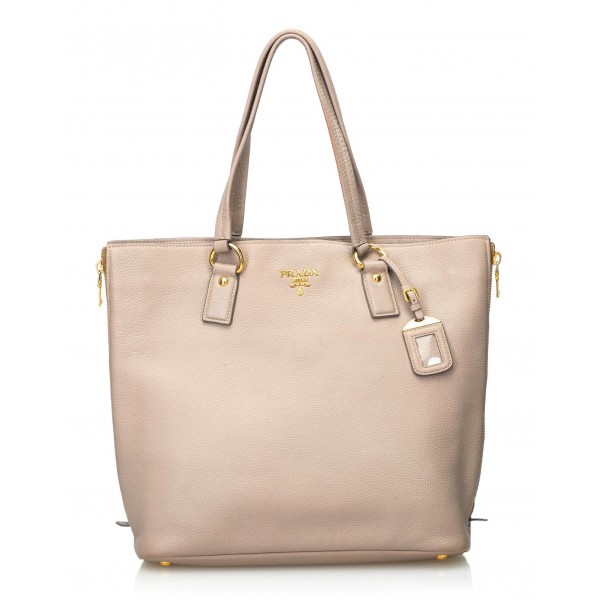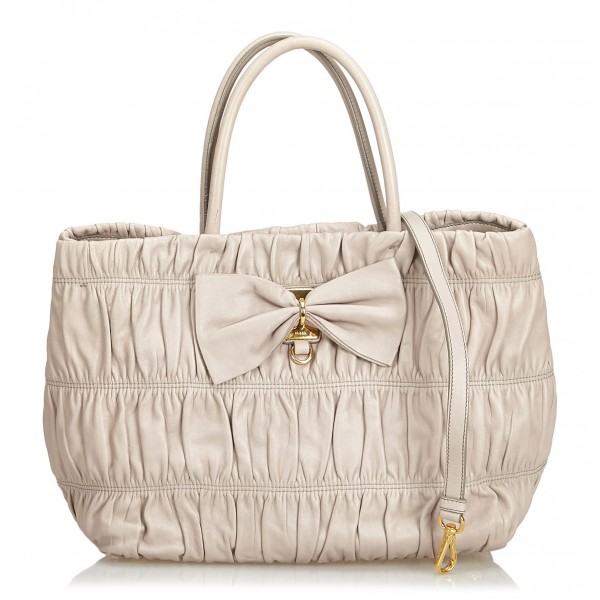No products
Categories
- Fashion Accessories
- Clothing
- Beauty & Lifestyle
-
Hi-Tech & Lifestyle
- Gaming
-
Case
- iPhone 11 Pro
- iPhone 11 Pro Max
- iPhone 11
- iPhone X / XS
- iPhone XS Max
- Samsung S10 / S10+ / S10e
- Huawei P30 / P30 Pro / P30 Lite
- Huawei P20 / P20 Pro / P20 Lite
- iPhone XR
- Samsung S9
- Samsung S9+
- iPhone 8 / 7
- iPhone 8 Plus / 7 Plus
- Samsung S8
- Samsung S8+
- Samsung S7
- Samsung S7 Edge
- iPhone 6 / 6 s
- iPhone 6 Plus / 6 s Plus
- iPhone 5 / SE
- Skin
- Audio
- Smart Home
- Drones & Hoverboard
- Photo & Video
- Desk Supplies
- Accessories
- Games
- Beverages
- Food
- Home
- Jewelry
- Luxury
- Travel
- Art
- Footwear
- Vintage Fashion
- Restaurants
- Sport
- Animals
- Gift Ideas
- Kidswear
Extra
Prada Vintage
Founded in 1913 in Milan
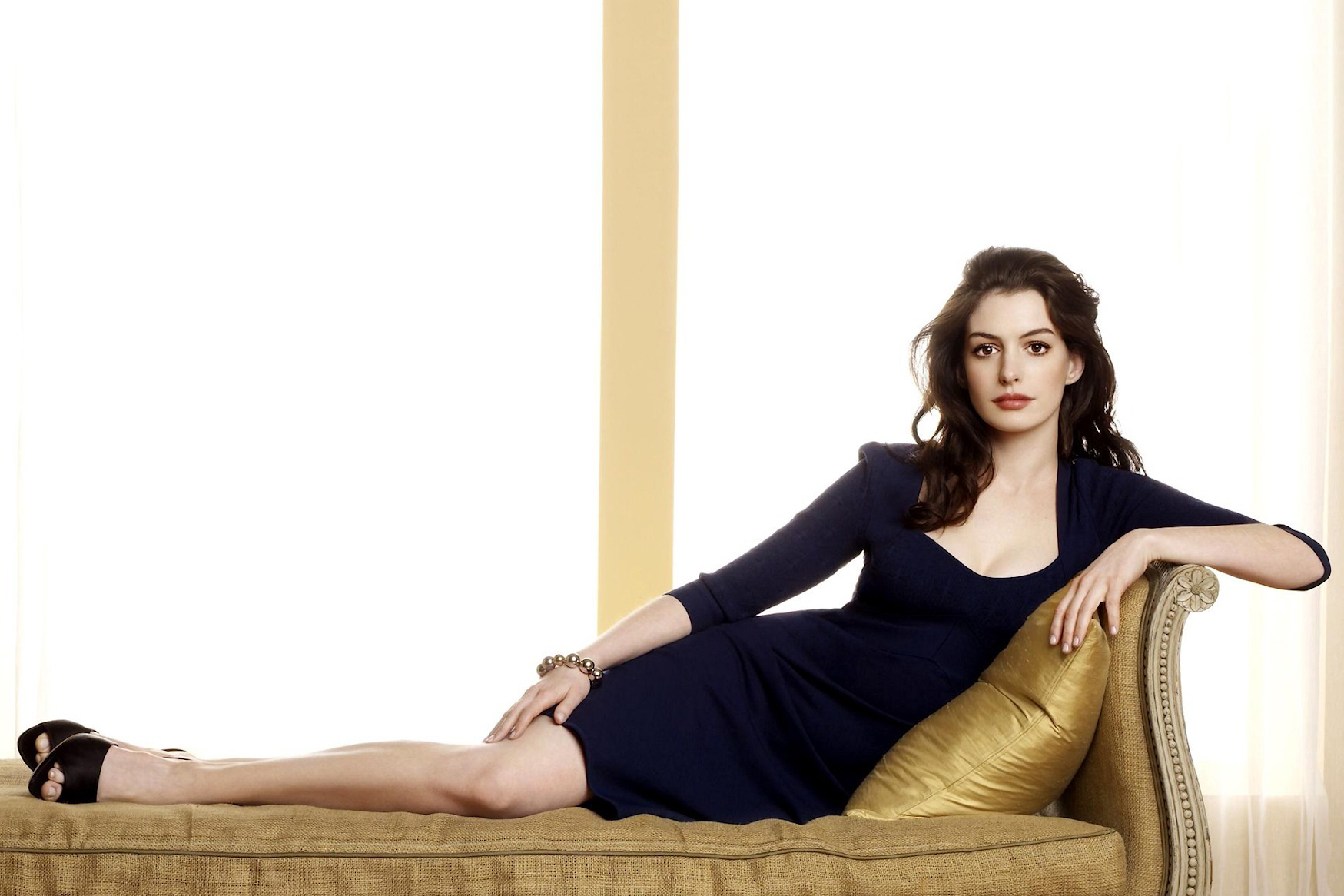
Overview

Since 1913, Prada has been synonymous with cutting-edge style.
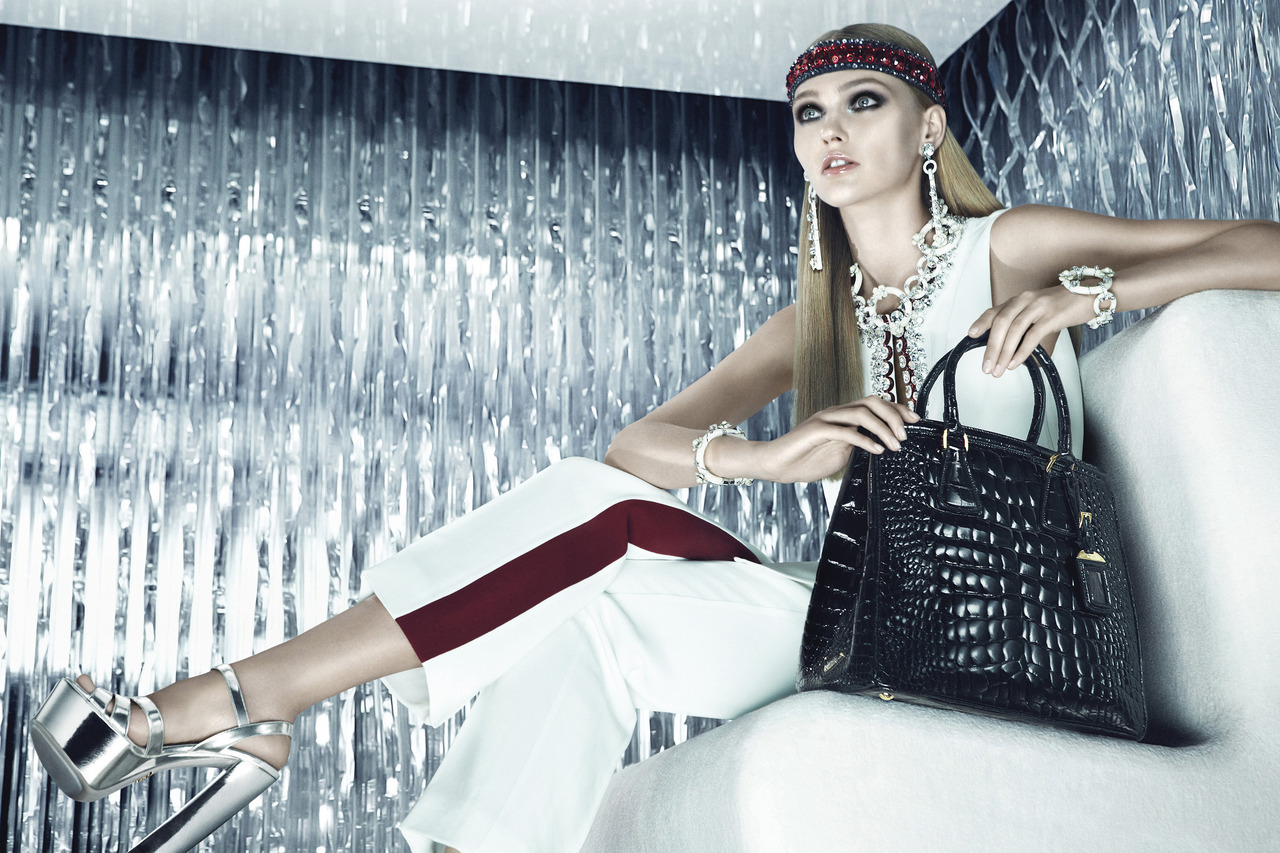
Its intellectual universe combines concept, structure and image through codes that go beyond trends.
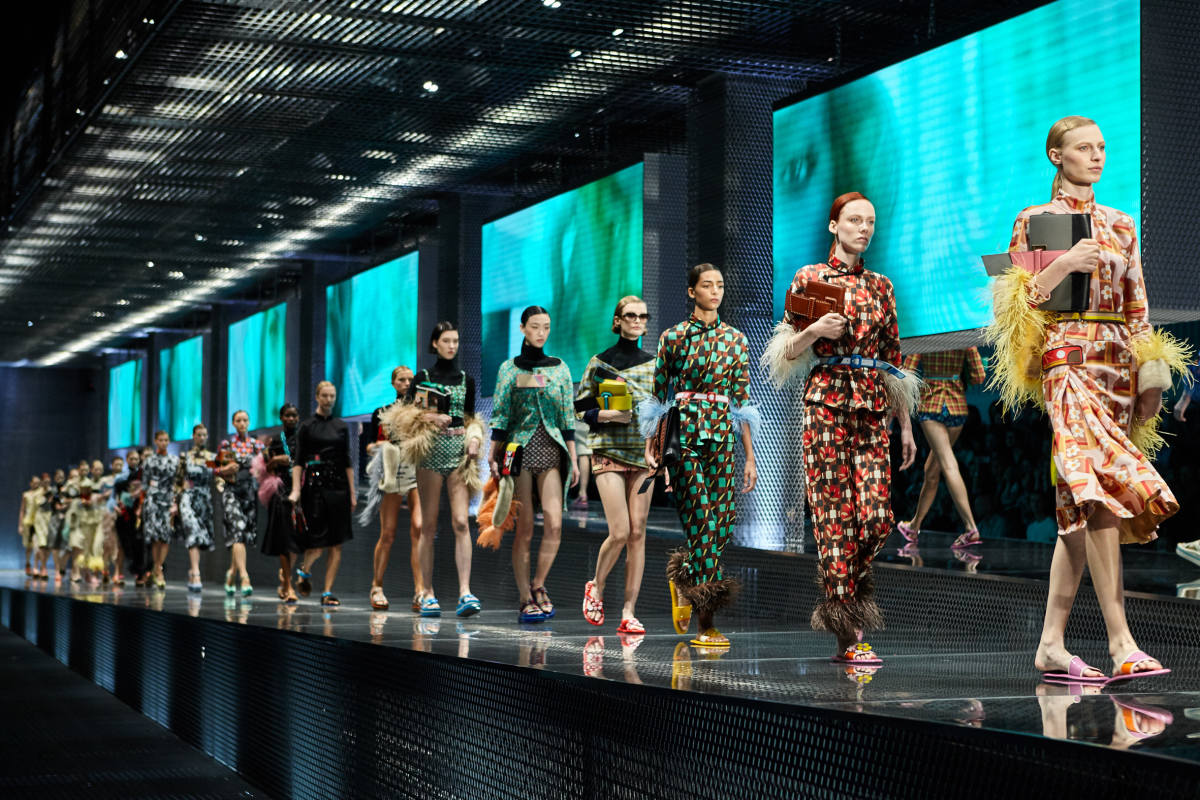
Its fashion transcends products, translating conceptuality into a universe that has become a benchmark to those who dare to challenge conventions focusing on experimentation.

Transcending Trends
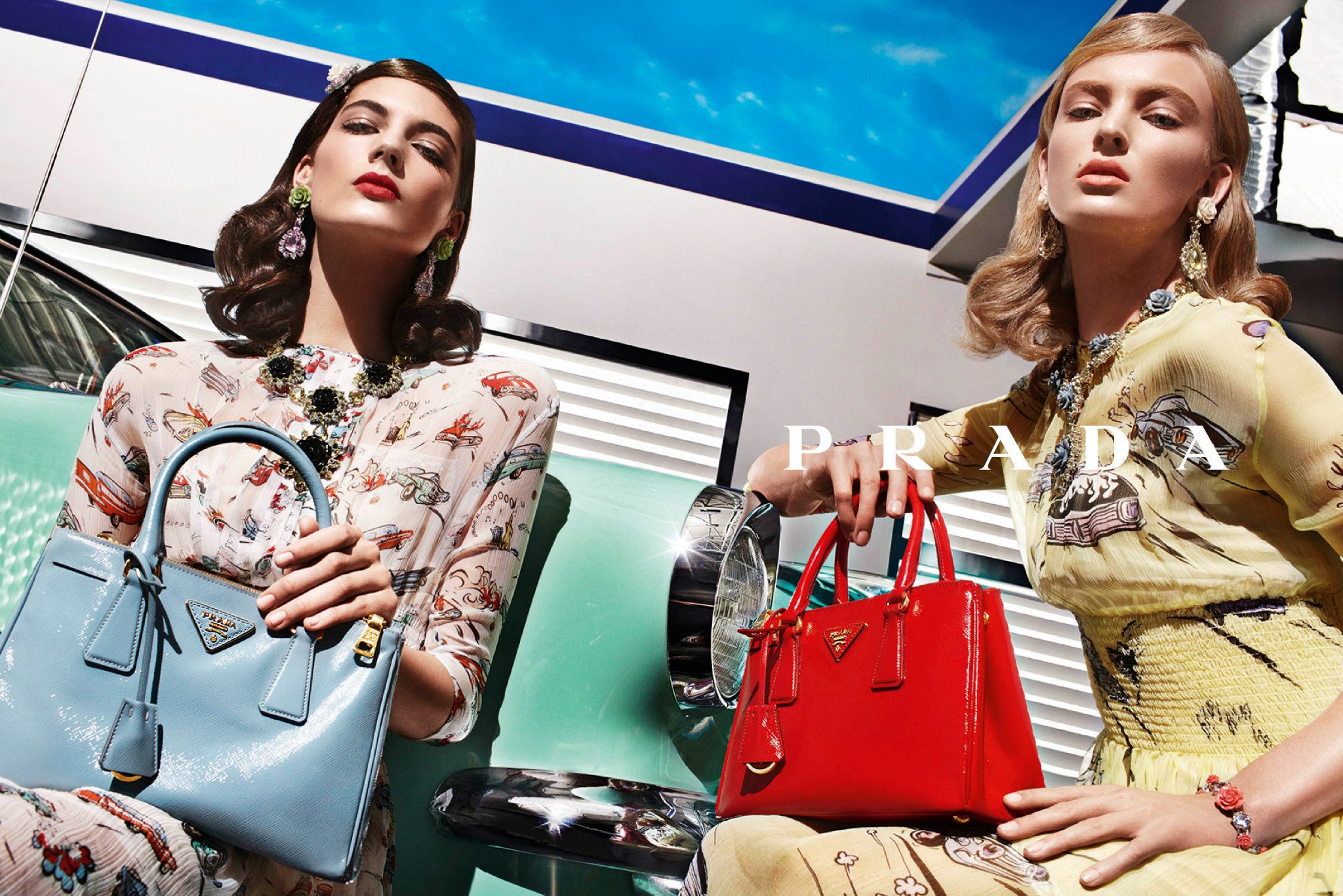
Through an innovative approach, which draws inspiration from an unconventional analysis of society, Prada elaborates codes that transcend trends.
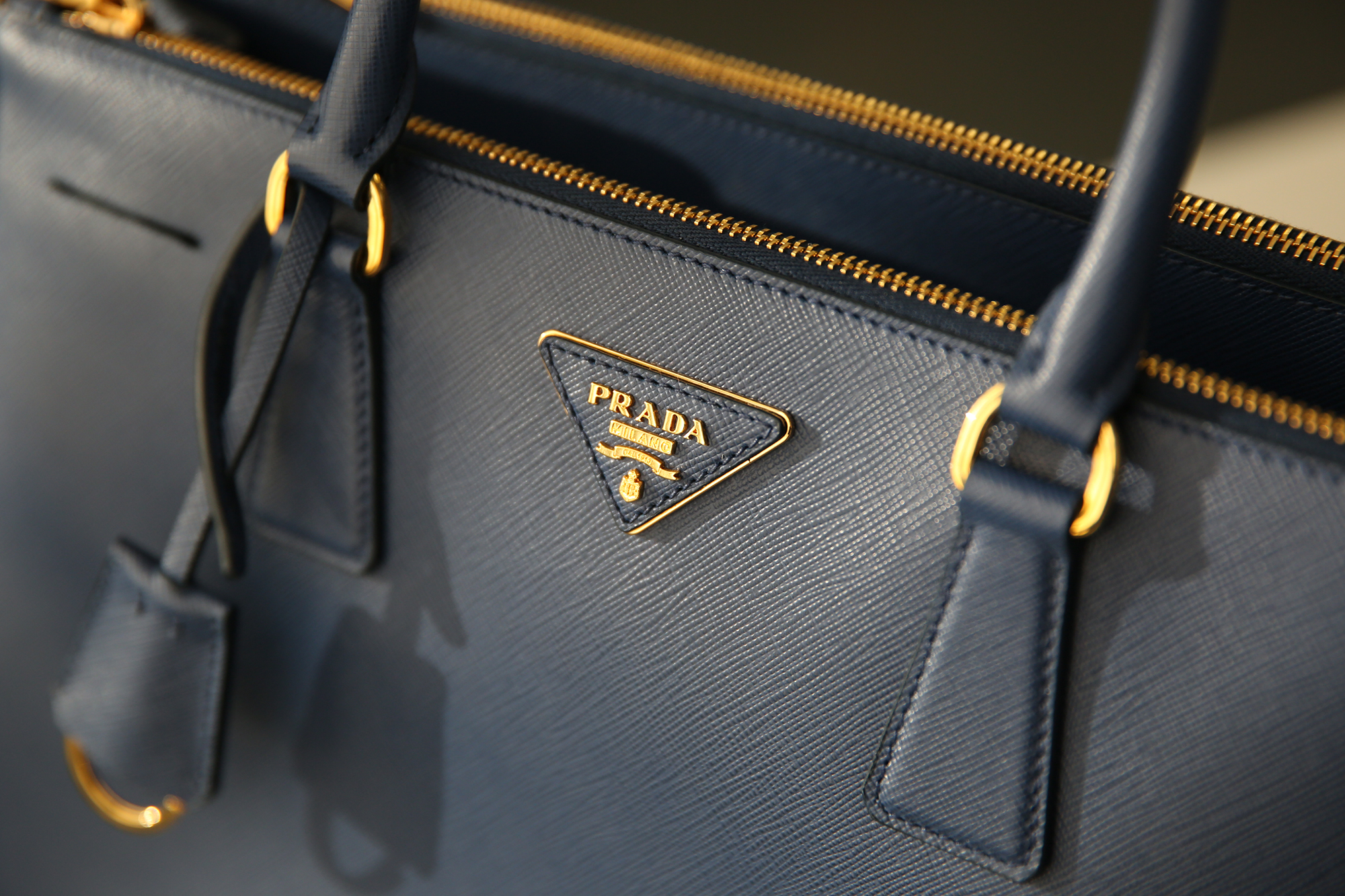
Style statements born from the passionate examination of disciplines that are, at times, apparently far from fashion, such as art, film and photography, resulting into creations that reinterpret reality from unusual perspectives.
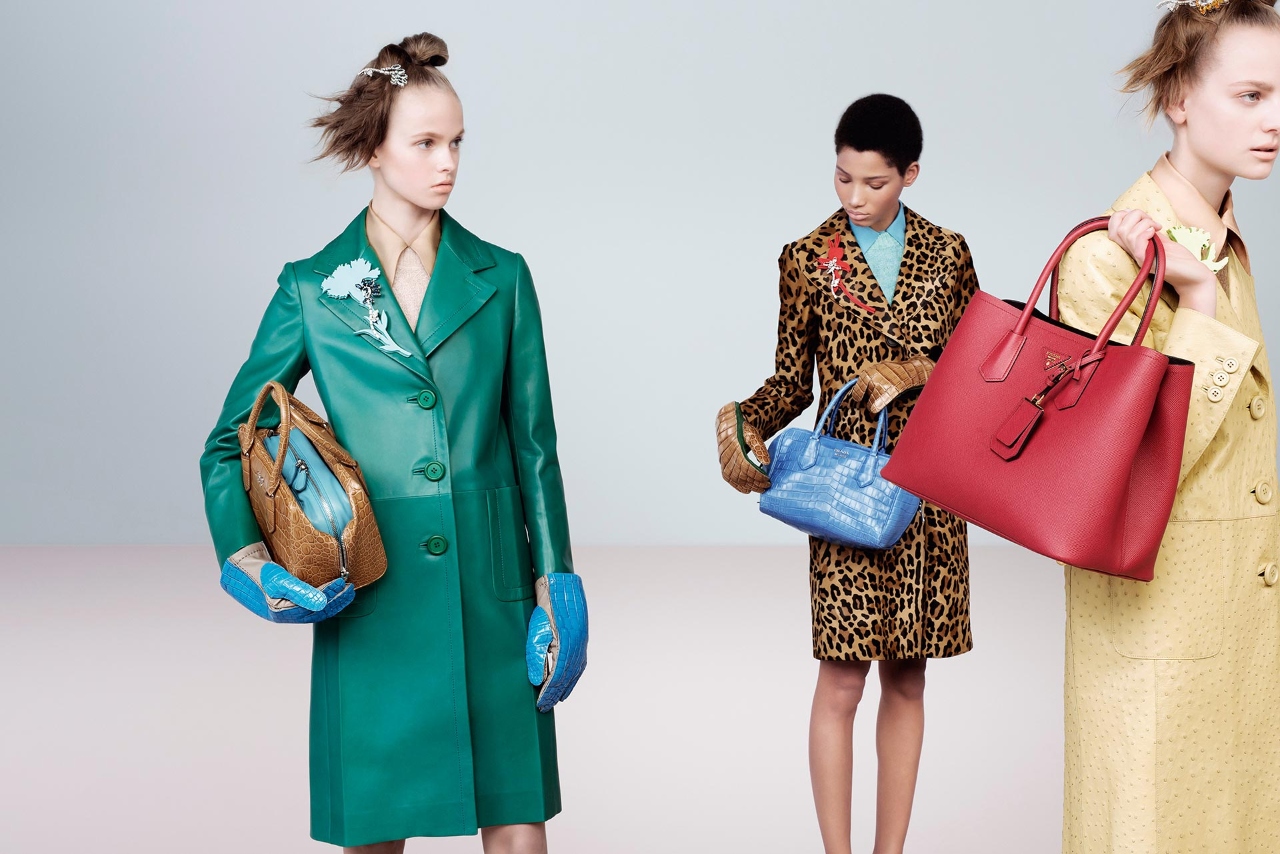
Transcending Products

Unfettered from conceptual limitations and from the strict commitment to stylistic cohesion, the aesthetic codes of the brand have influenced generations of creative minds through manifestos of cultural emancipation that embrace the broadest aspects of life.
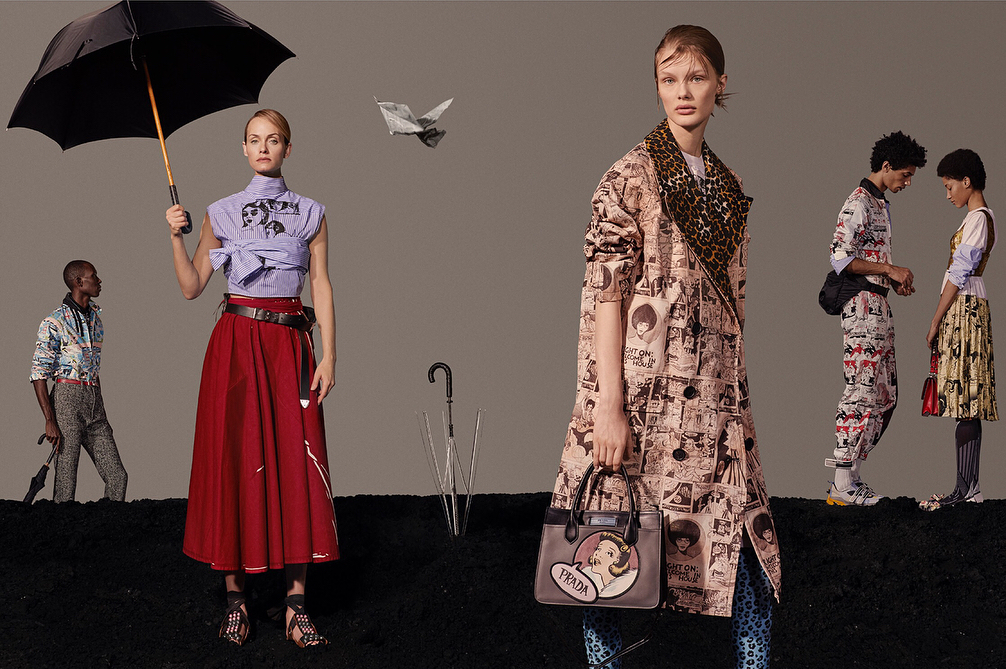
Prada’s fashion transcends products bringing ideas and ideals to life through its clothes and accessories, which become tools of confident self-expression.

Looking for New Perspectives
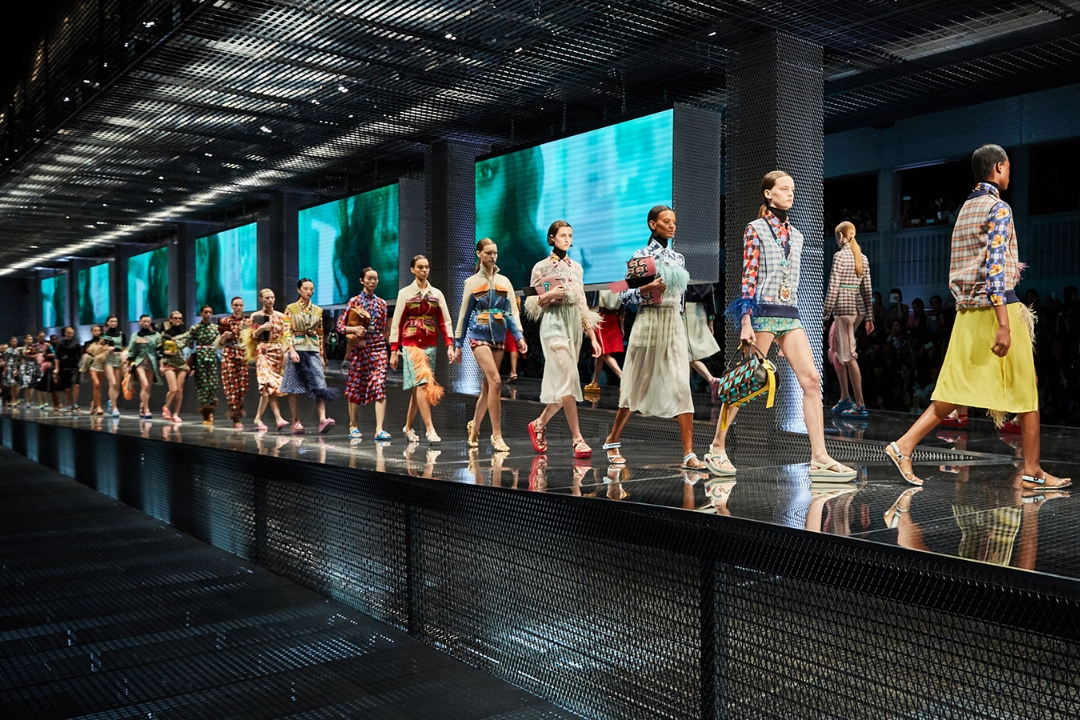
Through her work, Miuccia Prada challenges pre-conceived aesthetic patterns.
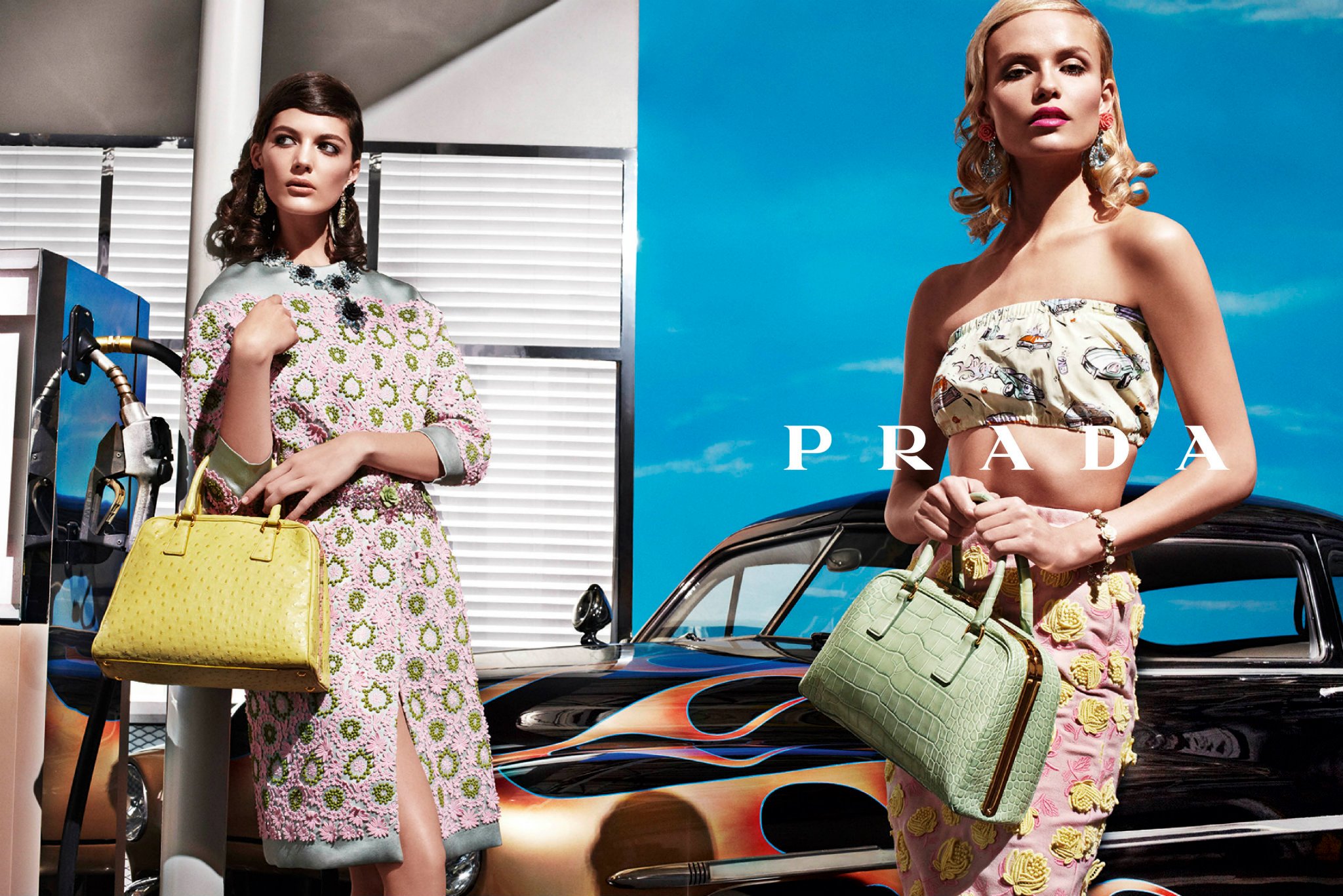
Prada is an expression of society and, as such, it changes while Prada evolves accordingly.
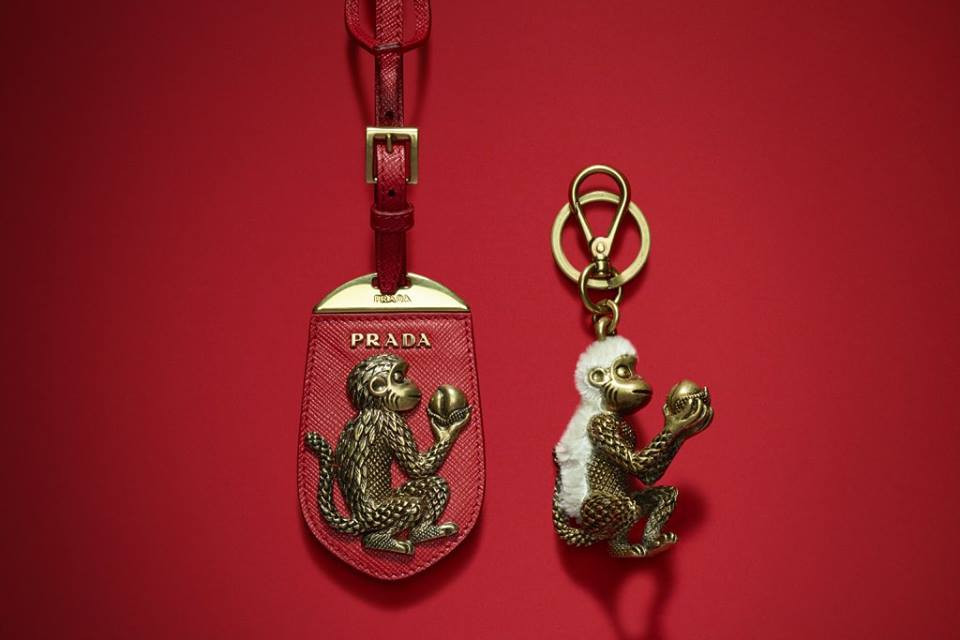
What’s simple and classic is distorted and reconsidered in the tireless search of new perspectives.

A state-of-the-art laboratory grounded on the values of instinct and cultural inclination.

Reinterpreting Shared Aesthetic Codes

Conceptuality is Prada’s preferred form of expression in an intellectual commitment to good taste.
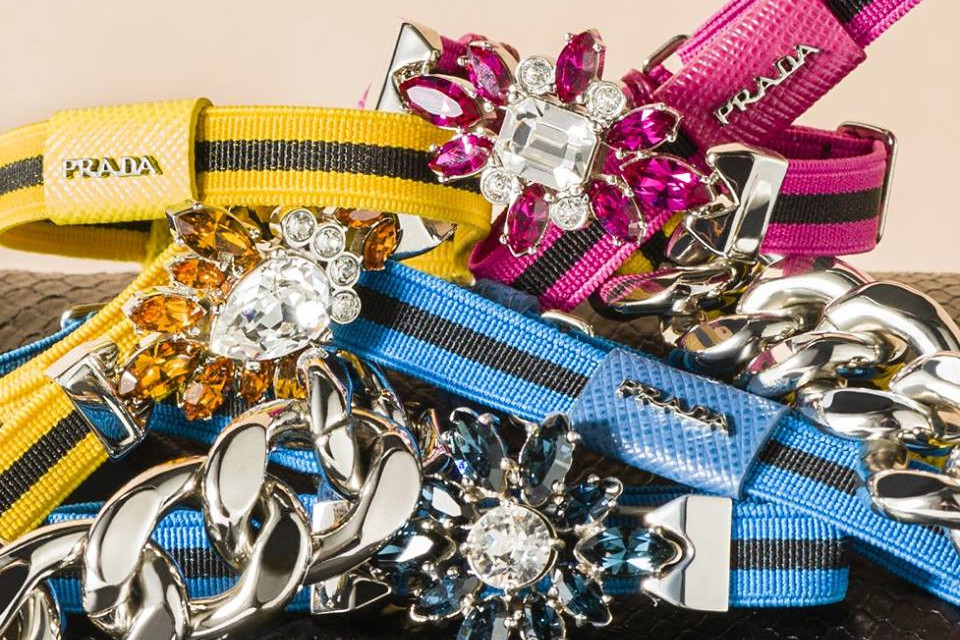
In every collection, shared aesthetic codes are reinterpreted through an unusual perspective, while new products challenge material processes with the use of technology and know-how.

An Endless Play of Past, Present and Future
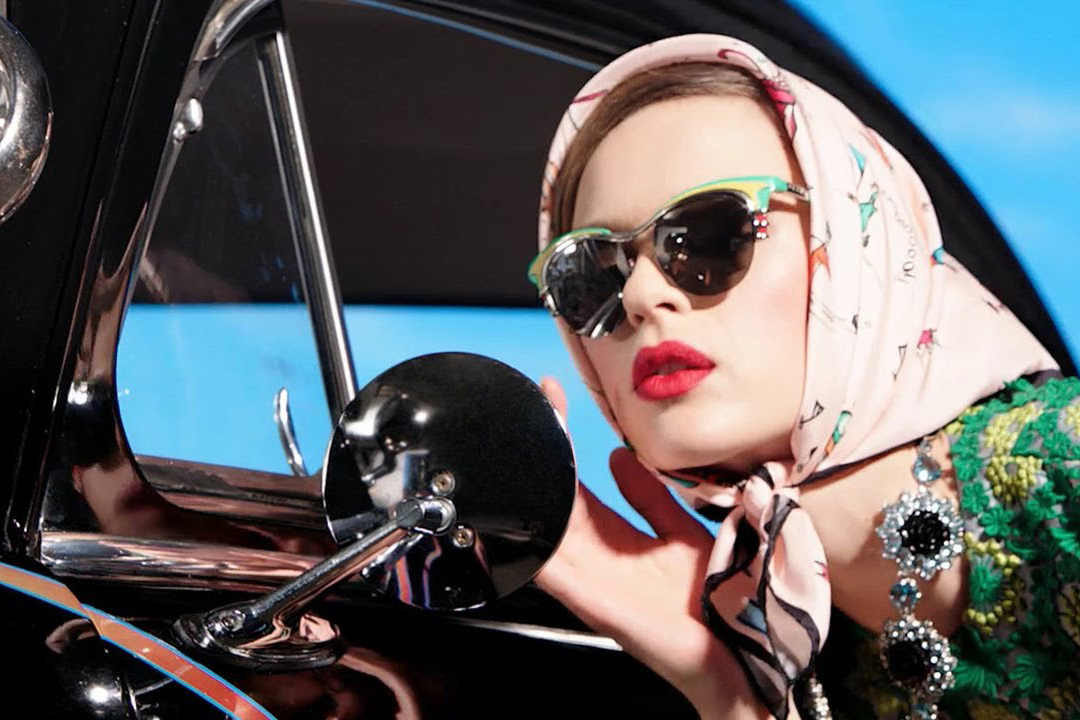
What is considered beauty and what’s deemed questionable are deliberately mixed in an endless play of past, present and future in which bourgeois codes are often broken down and reconstructed.

History
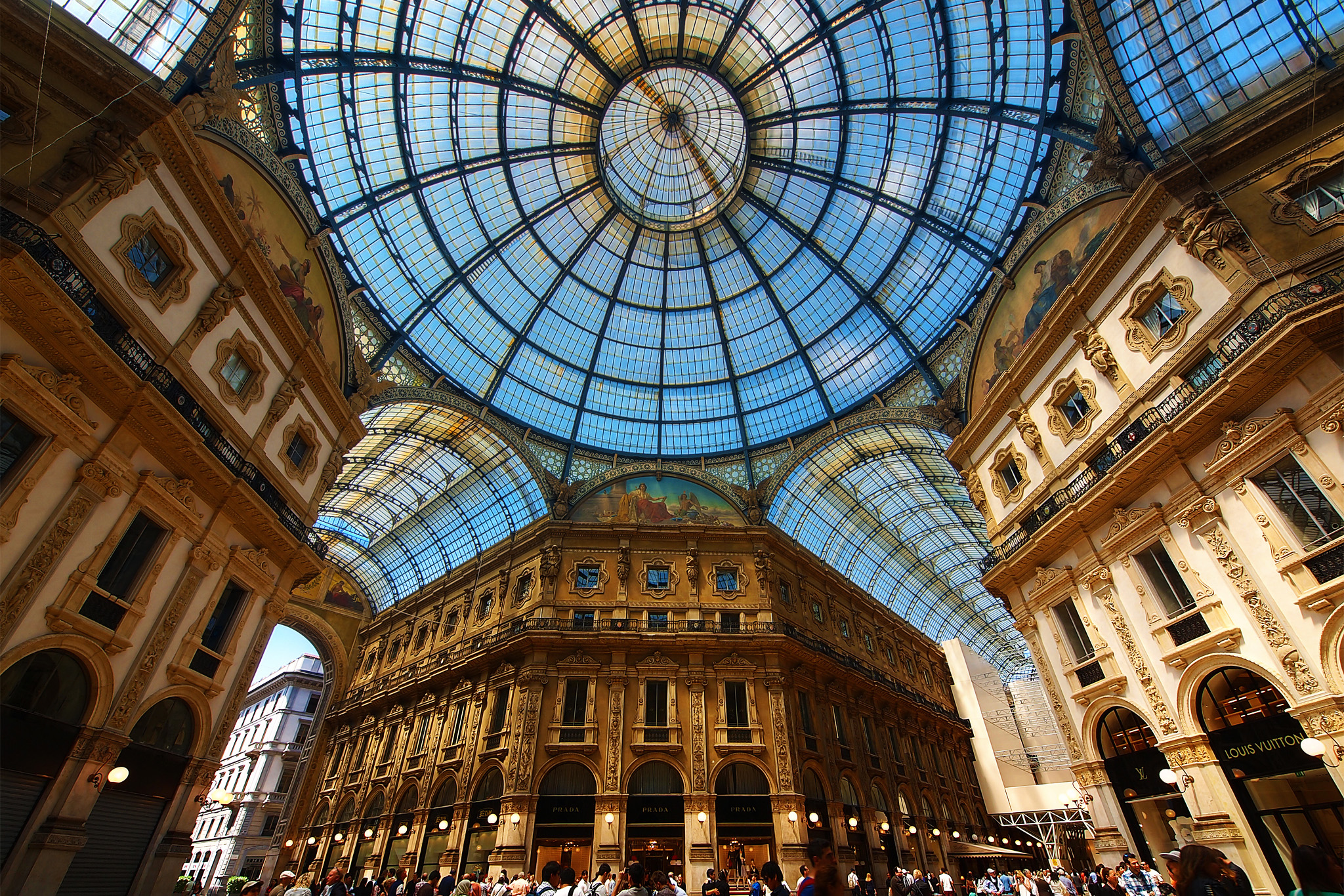
The history of the Prada begins in 1913 when Mario Prada, Miuccia Prada’s grandfather, opened the first Prada store in Milan.

Located in the prestigious Galleria Vittorio Emanuele II, the exclusive Prada boutique offered luggage and luxury goods manufactured with the finest artisanal techniques, using exquisite materials.

The boutique soon establishes itself as elegant shopping destination for the most prestigious Italian and European costumers, consolidating its role in 1919 with the title of Official Supplier of the Italian Royal House, which allows the brand to include the House of Savoy coat of arms and knotted rope design in its trademark logo.
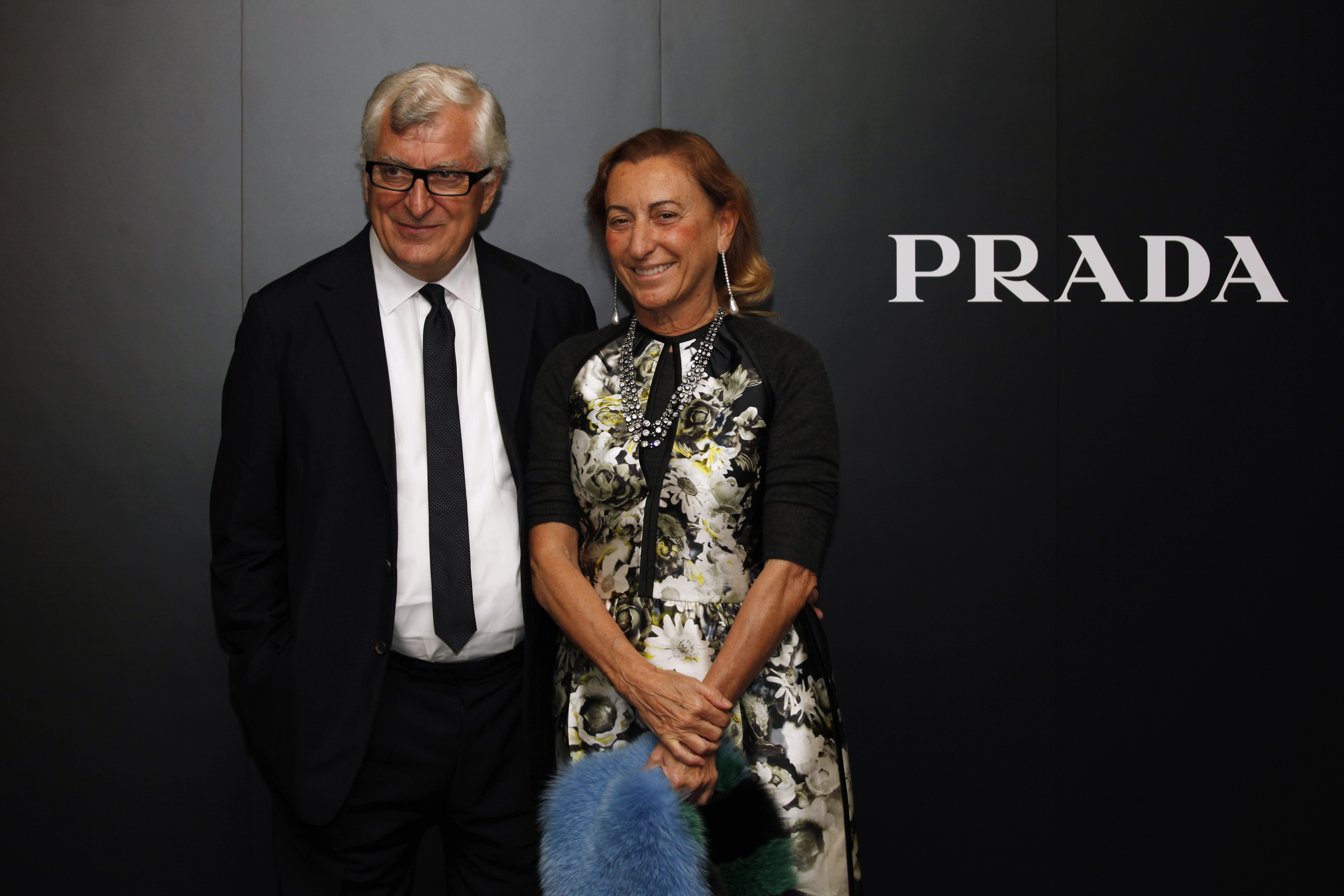
Miuccia Prada and Patrizio Bertelli started working together in the late 1970’s, laying the foundation for the future international expansion of the Group; Patrizio Bertelli pioneered the introduction of a new business model in the luxury industry, based on the direct control of all processes, applying rigorous quality criteria through all stages of production.
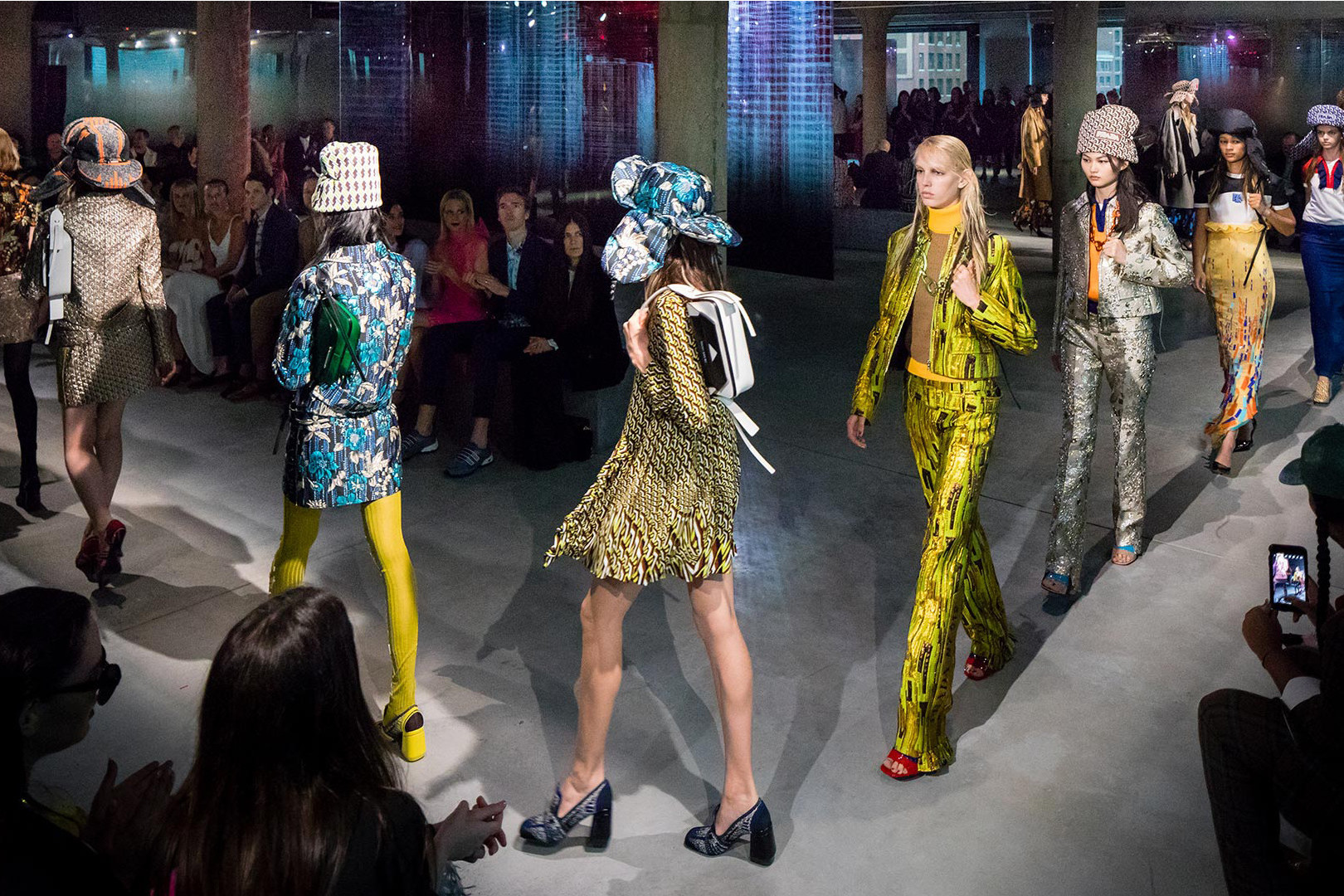
A business model that goes hand in hand with Miuccia Prada’s maverick creativity, which commanded international attention for its innovative approach inspired by her unconventional observation of society.
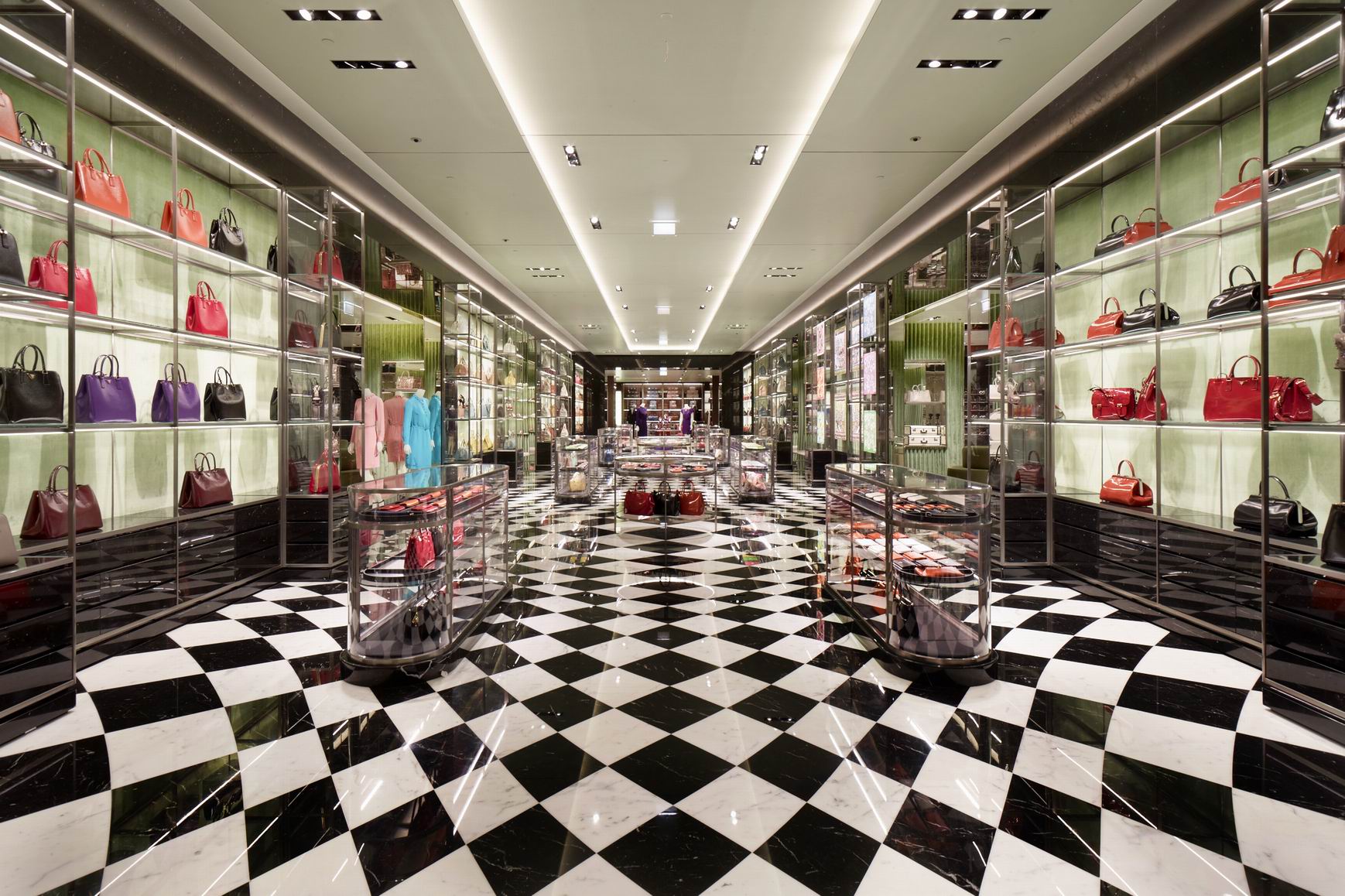
That allows her to anticipate - and often influence – fashion and style trends.

Today the Prada brand offers men’s and women’s leather goods, clothing and footwear, combining contemporary, innovative and sophisticated design with the uniqueness of handcrafted products.
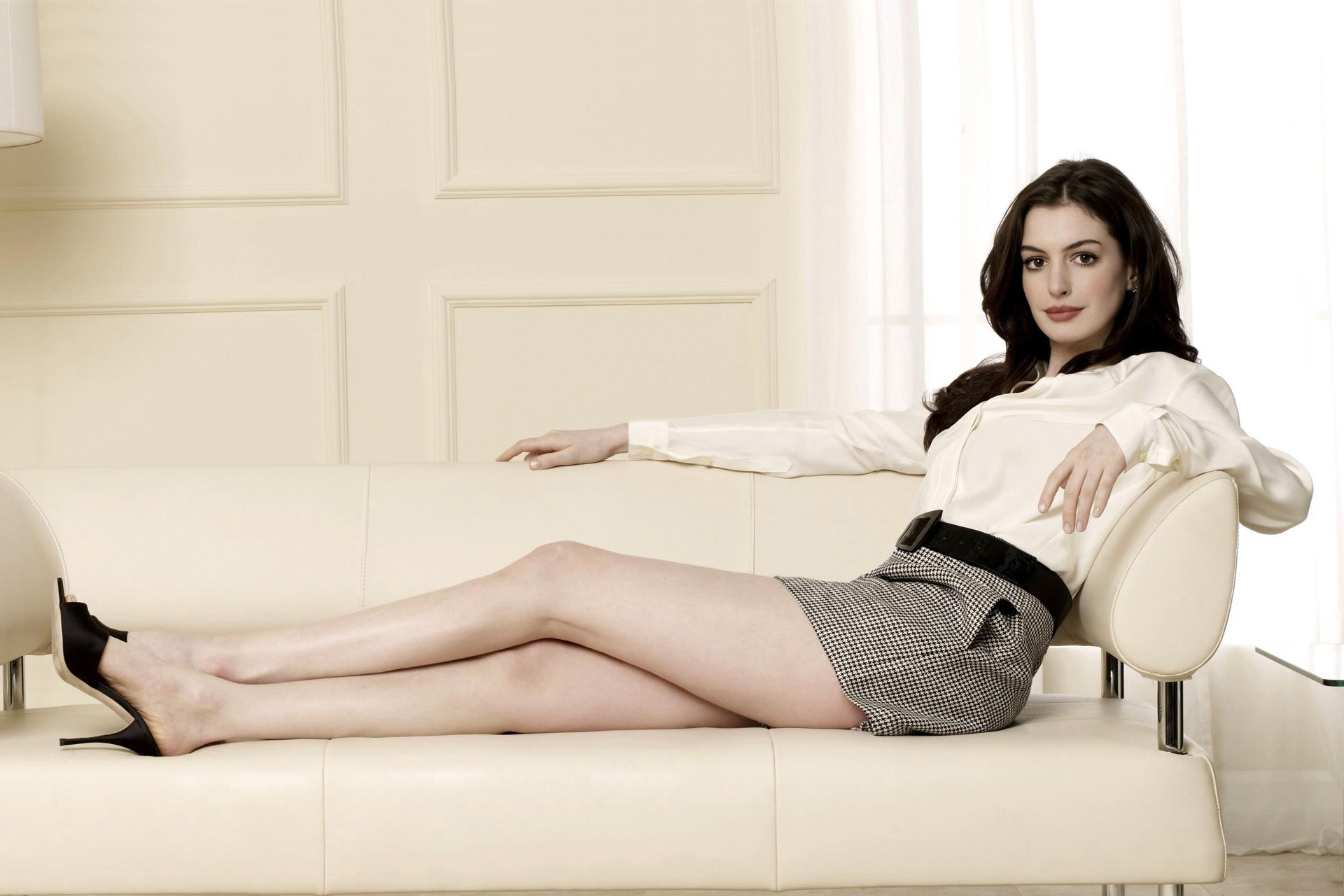
Prada also operates in the eyewear and fragrance sector.

Creativity
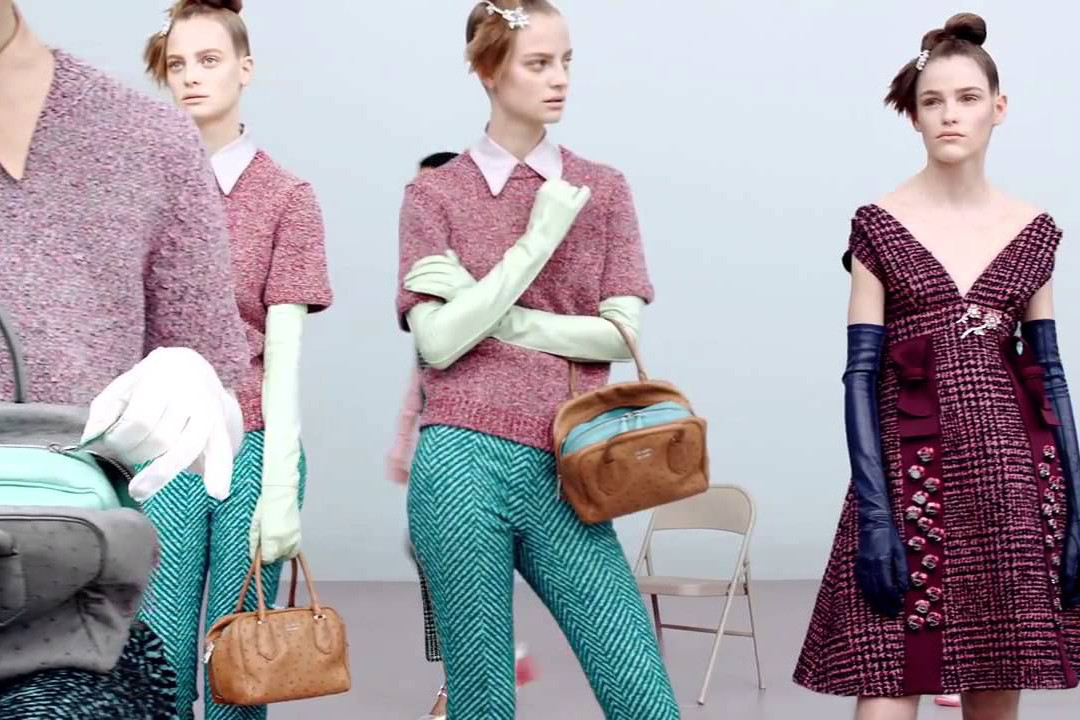
Creativity is at the core of the manufacturing process.
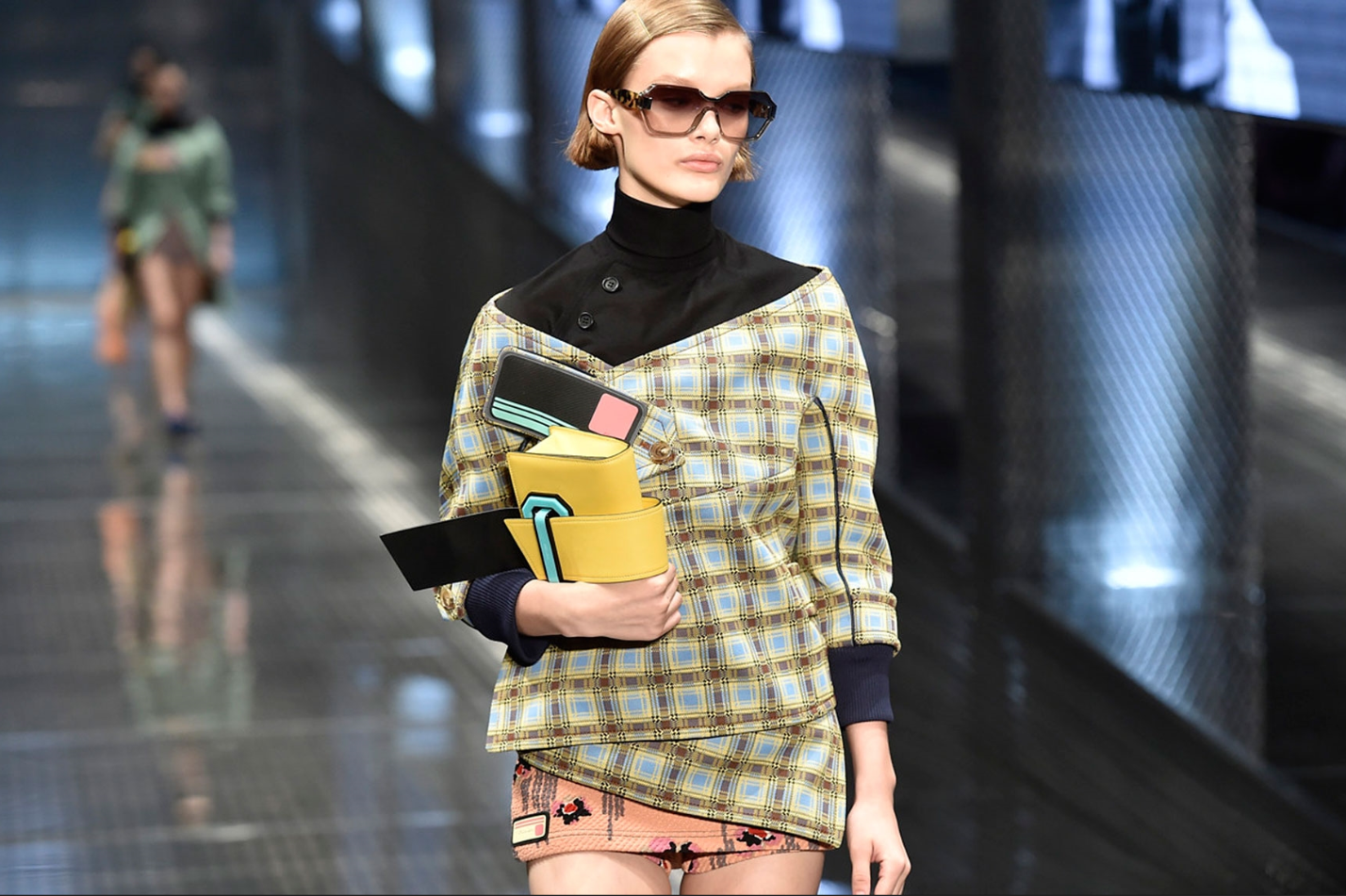
Miuccia Prada’s distinctive ability to combine her intellectual curiosity and cultural interests with the research of new ideas through an unconventional approach.
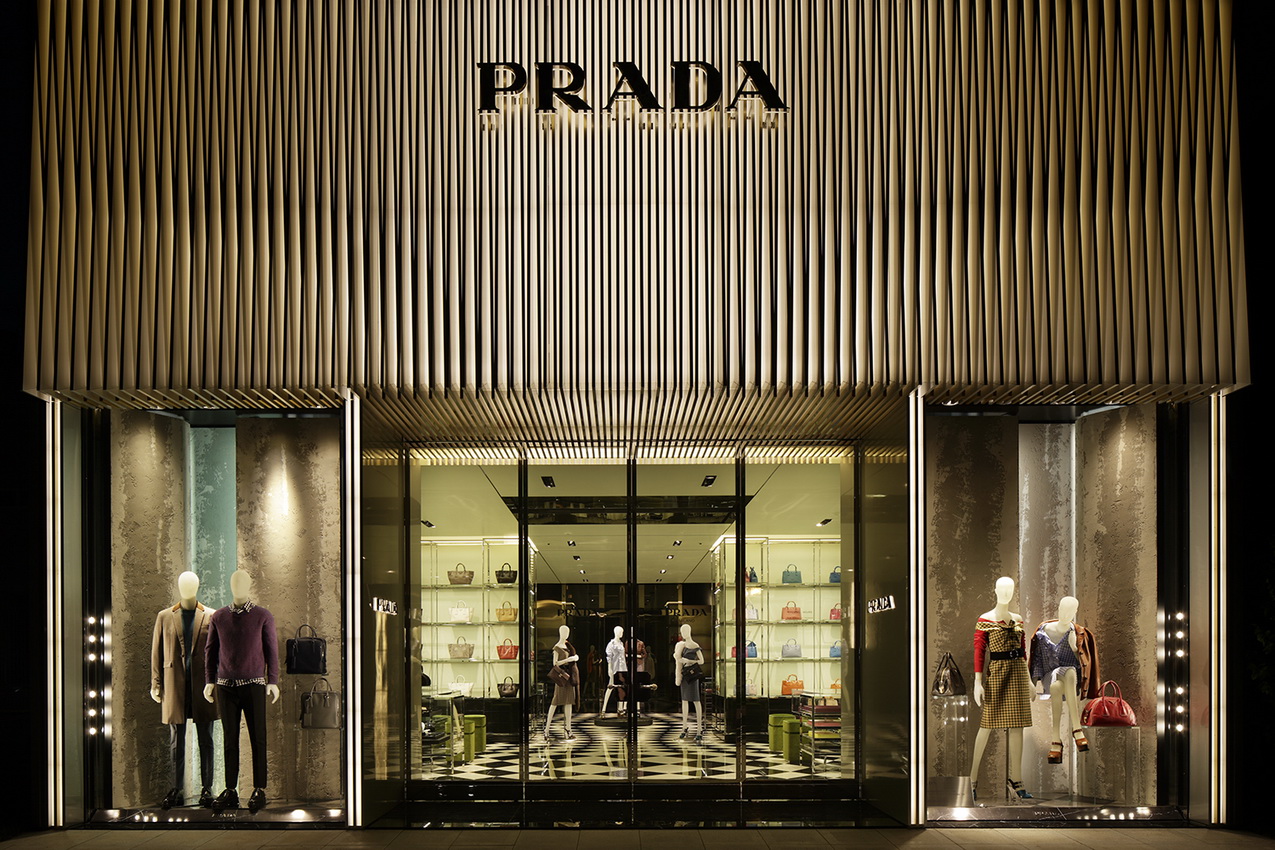
The creative process is based on incessant research and confrontation geared towards the creation of an actual project culture grounded on a method that guides the work of all the actors involved.
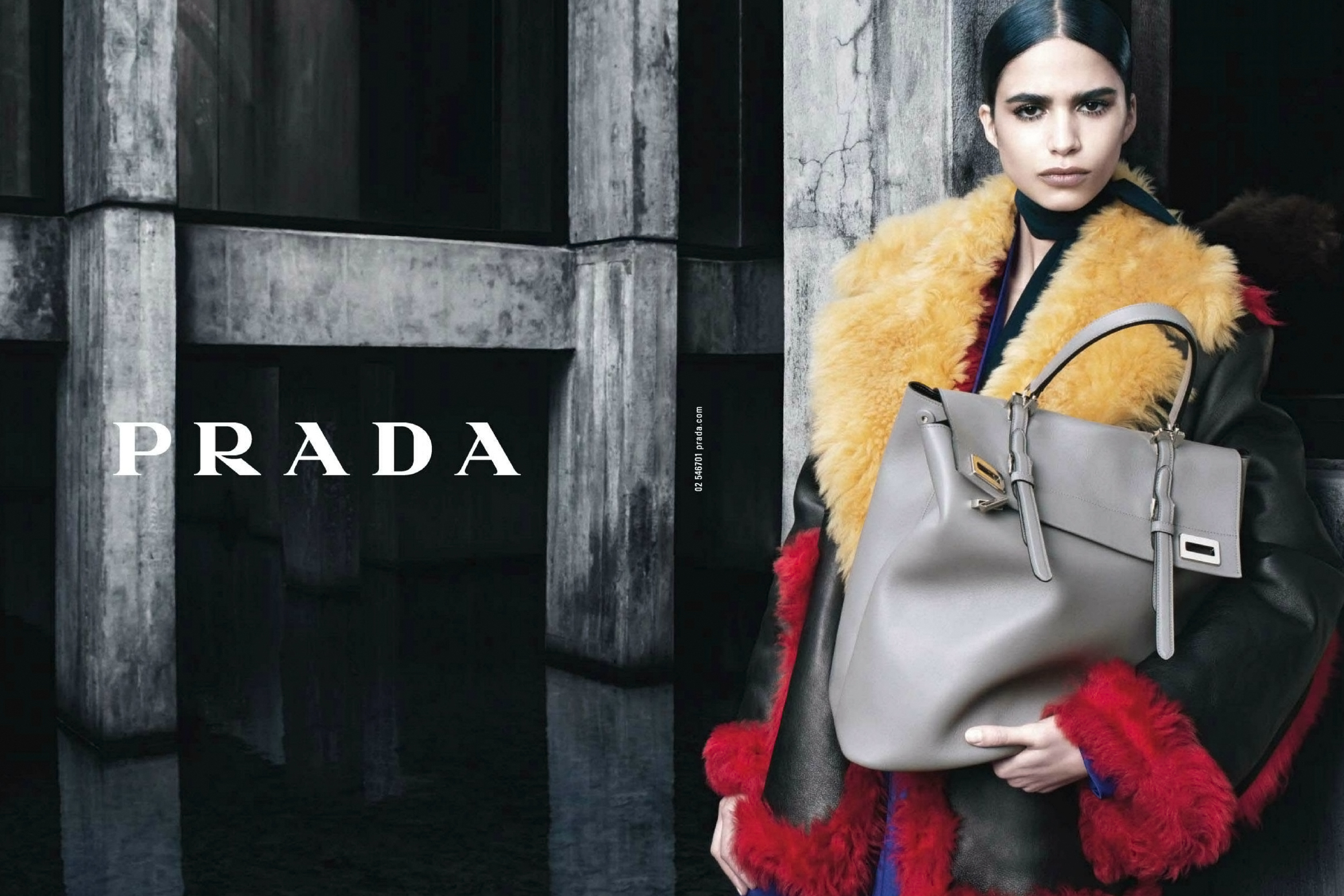
Excursus

The exploration of apparently distant universes is imbued in the DNA of the Prada Group, which supports Fondazione Prada’s cultural projects as well as Luna Rossa sporting challenges.
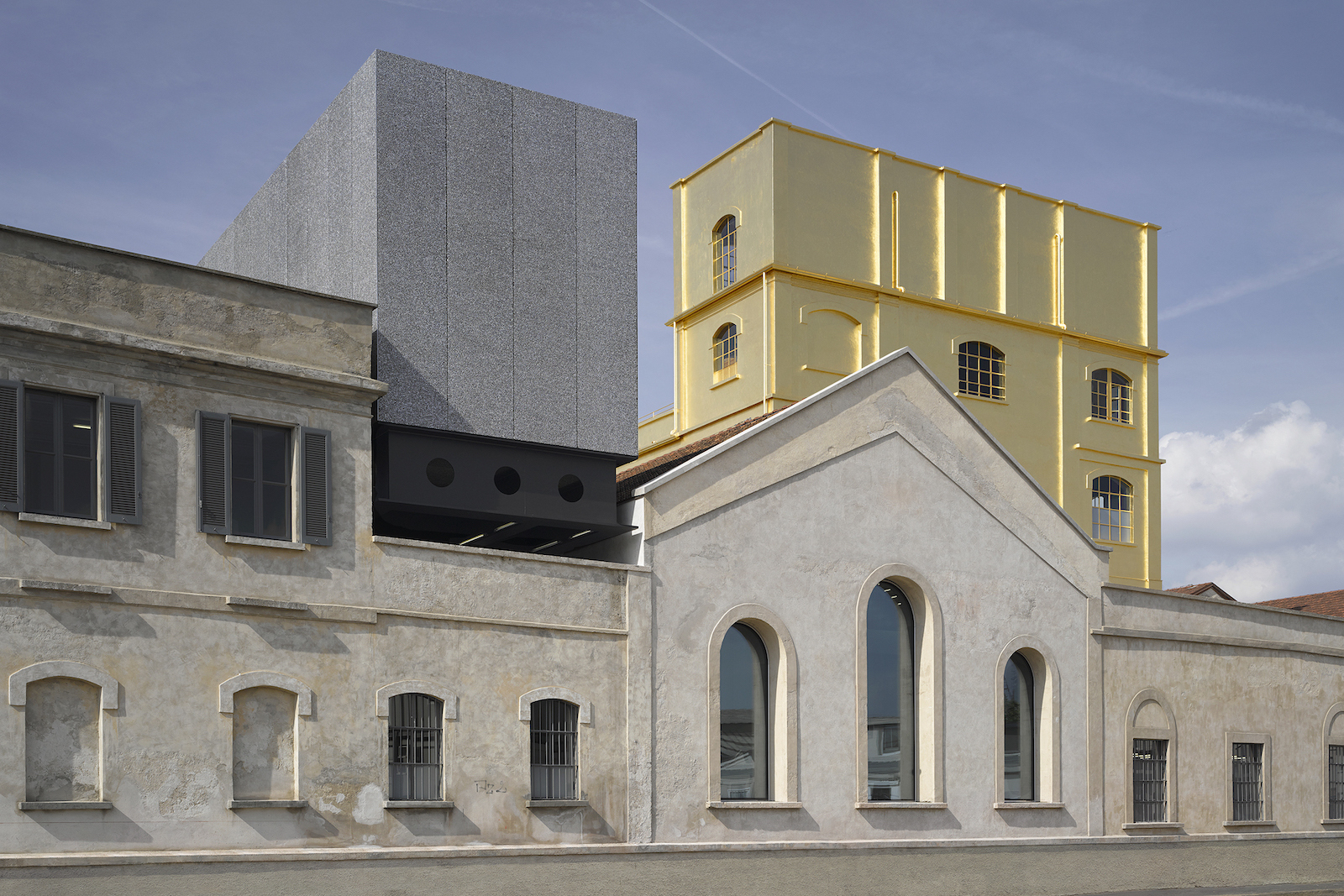
Fondazione Prada was born in 1993 to organize and sponsor contemporary art exhibitions and several other cultural activities that collected international appreciation and recognition.
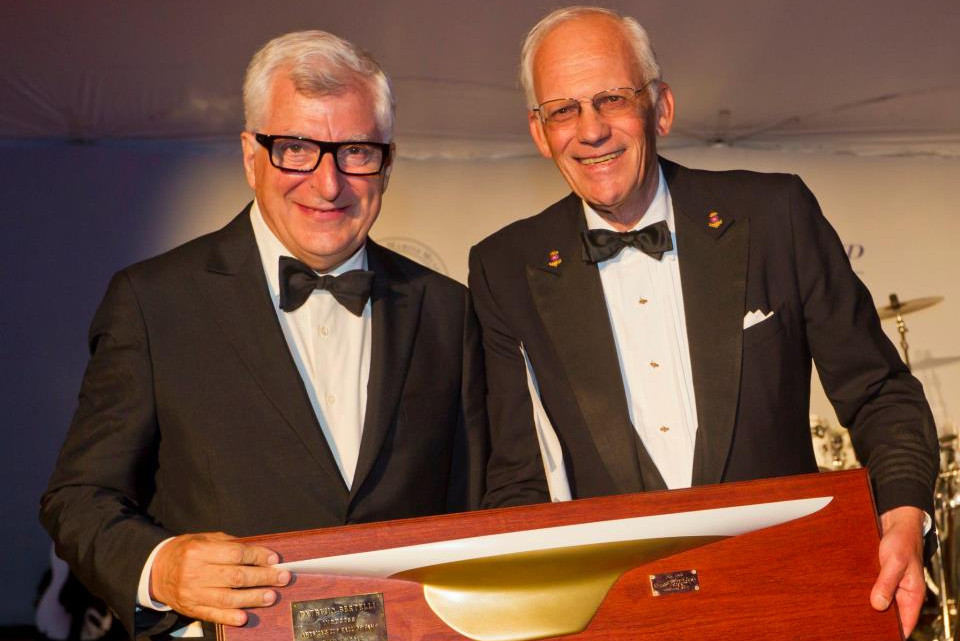
Patrizio Bertelli’s passion for sailing gave birth to the Prada Challenge for the America’s Cup 2000 team in 1997, undertaking its first America’s Cup challenge, the world’s oldest sporting competition and the most important international regatta.

Prada takes part in the competition as sponsor of the Luna Rossa sailing team for 4 editions of the America’s Cup (2000, 2003, 2007 e 2013), winning the challengers’ selection series in 2000 and making it to the finals in 2007 and 2013.

In 2017 Luna Rossa is chosen once again as the Challenger of Record for the 36th America’s Cup that will take place in 2021 in Auckland, New Zealand.
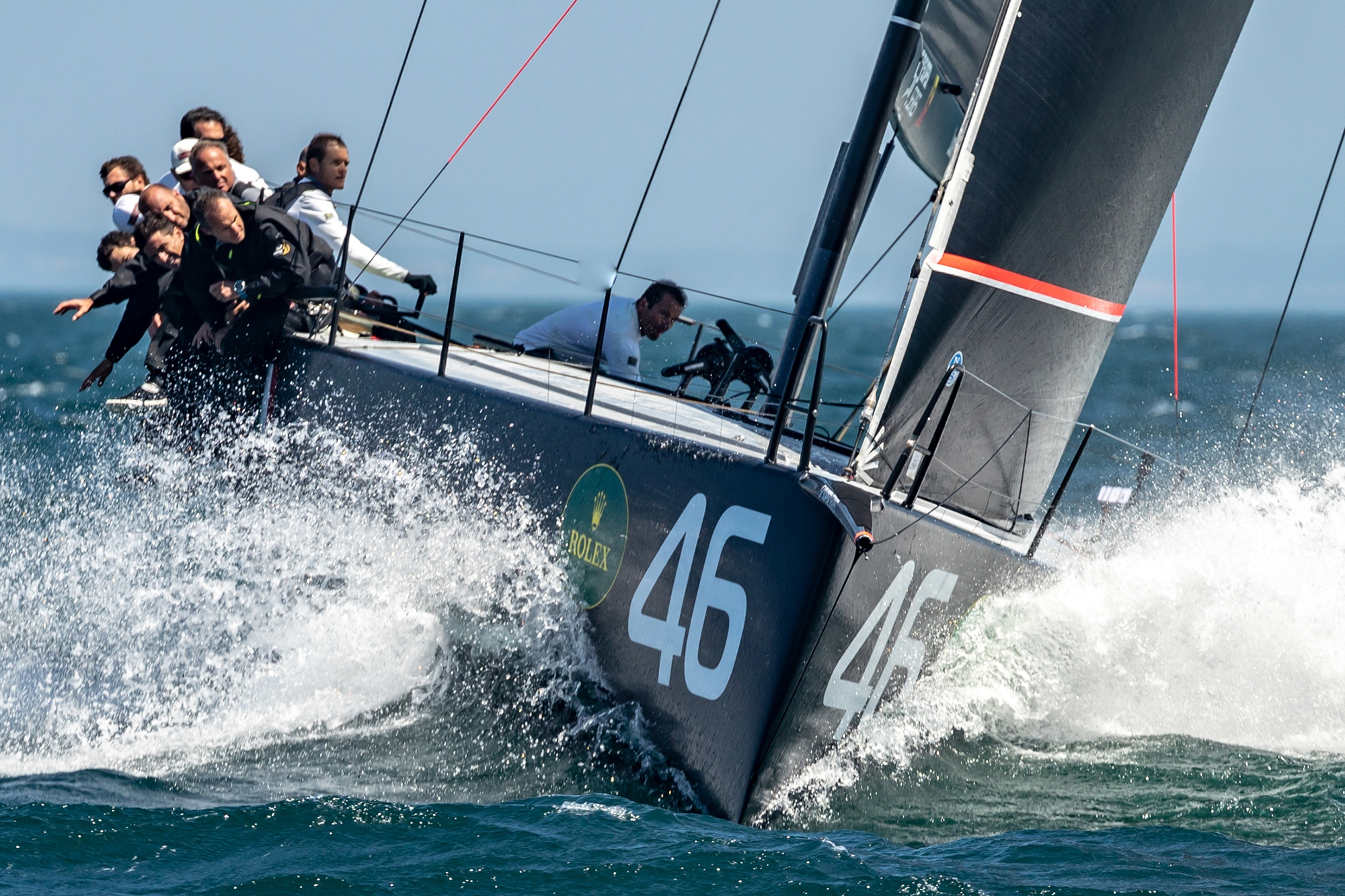
Products Prada Vintage
Prada Vintage
Founded in 1913 in Milan

Overview

Since 1913, Prada has been synonymous with cutting-edge style.

Its intellectual universe combines concept, structure and image through codes that go beyond trends.

Its fashion transcends products, translating conceptuality into a universe that has become a benchmark to those who dare to challenge conventions focusing on experimentation.

Transcending Trends

Through an innovative approach, which draws inspiration from an unconventional analysis of society, Prada elaborates codes that transcend trends.

Style statements born from the passionate examination of disciplines that are, at times, apparently far from fashion, such as art, film and photography, resulting into creations that reinterpret reality from unusual perspectives.

Transcending Products

Unfettered from conceptual limitations and from the strict commitment to stylistic cohesion, the aesthetic codes of the brand have influenced generations of creative minds through manifestos of cultural emancipation that embrace the broadest aspects of life.

Prada’s fashion transcends products bringing ideas and ideals to life through its clothes and accessories, which become tools of confident self-expression.

Looking for New Perspectives

Through her work, Miuccia Prada challenges pre-conceived aesthetic patterns.

Prada is an expression of society and, as such, it changes while Prada evolves accordingly.

What’s simple and classic is distorted and reconsidered in the tireless search of new perspectives.

A state-of-the-art laboratory grounded on the values of instinct and cultural inclination.

Reinterpreting Shared Aesthetic Codes

Conceptuality is Prada’s preferred form of expression in an intellectual commitment to good taste.

In every collection, shared aesthetic codes are reinterpreted through an unusual perspective, while new products challenge material processes with the use of technology and know-how.

An Endless Play of Past, Present and Future

What is considered beauty and what’s deemed questionable are deliberately mixed in an endless play of past, present and future in which bourgeois codes are often broken down and reconstructed.

History

The history of the Prada begins in 1913 when Mario Prada, Miuccia Prada’s grandfather, opened the first Prada store in Milan.

Located in the prestigious Galleria Vittorio Emanuele II, the exclusive Prada boutique offered luggage and luxury goods manufactured with the finest artisanal techniques, using exquisite materials.

The boutique soon establishes itself as elegant shopping destination for the most prestigious Italian and European costumers, consolidating its role in 1919 with the title of Official Supplier of the Italian Royal House, which allows the brand to include the House of Savoy coat of arms and knotted rope design in its trademark logo.

Miuccia Prada and Patrizio Bertelli started working together in the late 1970’s, laying the foundation for the future international expansion of the Group; Patrizio Bertelli pioneered the introduction of a new business model in the luxury industry, based on the direct control of all processes, applying rigorous quality criteria through all stages of production.

A business model that goes hand in hand with Miuccia Prada’s maverick creativity, which commanded international attention for its innovative approach inspired by her unconventional observation of society.

That allows her to anticipate - and often influence – fashion and style trends.

Today the Prada brand offers men’s and women’s leather goods, clothing and footwear, combining contemporary, innovative and sophisticated design with the uniqueness of handcrafted products.

Prada also operates in the eyewear and fragrance sector.

Creativity

Creativity is at the core of the manufacturing process.

Miuccia Prada’s distinctive ability to combine her intellectual curiosity and cultural interests with the research of new ideas through an unconventional approach.

The creative process is based on incessant research and confrontation geared towards the creation of an actual project culture grounded on a method that guides the work of all the actors involved.

Excursus

The exploration of apparently distant universes is imbued in the DNA of the Prada Group, which supports Fondazione Prada’s cultural projects as well as Luna Rossa sporting challenges.

Fondazione Prada was born in 1993 to organize and sponsor contemporary art exhibitions and several other cultural activities that collected international appreciation and recognition.

Patrizio Bertelli’s passion for sailing gave birth to the Prada Challenge for the America’s Cup 2000 team in 1997, undertaking its first America’s Cup challenge, the world’s oldest sporting competition and the most important international regatta.

Prada takes part in the competition as sponsor of the Luna Rossa sailing team for 4 editions of the America’s Cup (2000, 2003, 2007 e 2013), winning the challengers’ selection series in 2000 and making it to the finals in 2007 and 2013.

In 2017 Luna Rossa is chosen once again as the Challenger of Record for the 36th America’s Cup that will take place in 2021 in Auckland, New Zealand.

Products Prada Vintage
-
Prada Vintage - Leather Saffiano Galleria Handbag Bag - Brown Beige - Leather...
This satchel features a saffiano leather body, rolled handles, top zip compartments, an open top, and an interior zip pocket.
2 390,00 € -
Prada Vintage - Saffiano Galleria Satchel Bag - Red - Leather Handbag -...
The Galleria satchel features a saffiano leather body, rolled leather handles, a detachable flat strap, ab open top with magnetic snap button closure, top zip compartments, and an interior zip and slip pockets.
2 390,00 € -
Prada Vintage - Leather Trolley - Gold - Leather Trolley - Luxury High Quality
This travel bag features a leather body, zip-around closure, flat handle, elongated handle, exterior zip pocket, and an interior zip pocket.
3 100,00 € -
Prada Vintage - Saffiano Leather Lux Promenade Satchel Bag - Blue - Leather...
The Lux Promenade Satchel features a saffiano leather body, rolled leather handles, a detachable flat leather strap, a 2 way top zip around closure, and interior zip and slip pockets.
1 800,00 € -
Prada Vintage - Canvas Satchel Bag - Brown Beige - Leather Handbag - Luxury...
This satchel features a saffiano leather body, rolled handles, top zip compartments, an open top, and an interior zip pocket.
1 550,00 € -
Prada Vintage - Patent Leather Lux Promenade Handbag Bag - Brown Beige -...
The Lux Promenade handbag features a patent leather body, rolled leather handles, a top zip closure, an interior zip compartment, and interior zip and slip pockets.
1 800,00 € -
Prada Vintage - Saffiano Leather Soft Tote Bag - Red - Leather Handbag -...
The Soft Tote features a saffiano leather body, flat leather handles, a detachable leather strap, an open top, and interior zip and slip pockets.
1 595,00 € -
Prada Vintage - Nylon Crossbody Bag - Black - Leather Handbag - Luxury High...
This crossbody bag features a nylon body, chain-link straps, leather flap with magnetic snap closure, and an interior zip pocket.
1 595,00 € -
Prada Vintage - Vitello Daino Leather Satchel Bag - White Ivory - Leather...
This satchel features a leather body, a detachable leather shoulder strap, an open top with magnetic closure, and interior zip and slip pocket.
2 200,00 € -
Prada Vintage - Ostrich-Trimmed Ponyhair Satchel Bag - Black - Leather...
This satchel features a nylon body with ostrich and pony hair trim, single flat top handle, front flap with turn-lock closure, exterior zip pocket, and interior zip and slip pockets.
2 700,00 € -
Prada Vintage - Leather Tote Bag - Red - Leather Handbag - Luxury High Quality
This tote bag features a leather body, a flat leather strap, an open top with magnetic closure, and an interior zip pocket.
1 390,00 € -
Prada Vintage - Vitello Daino Leather Hobo Bag - White Ivory - Leather...
This hobo bag features a leather body, a rolled leather handle with gold-tone hardware, an open top with snap button closure, and an interior zip pocket.
1 350,00 € -
Prada Vintage - Nylon Drawstring Tote Bag - Brown - Leather Handbag - Luxury...
This tote bag features a nylon and leather body, rolled leather handles, drawstring closure, interior open pocket, and an interior zip pocket.
1 290,00 € -
Prada Vintage - Mini Saffiano Leather Satchel Bag - Pink - Leather Handbag -...
This satchel features a leather body, rolled leather handles, detachable chain-link strap, and a top zip closure.
1 290,00 € -
Prada Vintage - Gathered Nylon Tote Bag - Black - Leather Handbag - Luxury...
This tote bag features a gathered nylon body, rolled leather handles, an open top, and interior zip and slip pockets.
1 280,00 € -
Prada Vintage - Vitello Daino Leather Tote Bag - Brown Beige - Leather...
The Vitello Daino shopper tote bag features a leather body, rolled leather handles, an open top with a magnetic snap button closure, and interior zip and slip pockets.
1 480,00 € -
Prada Vintage - Raffia Satchel Bag - Brown Beige - Leather Handbag - Luxury...
This satchel features a straw body with leather trim, rolled leather handles, a detachable flat strap, an open top with a magnetic closure, and interior zip pockets.
1 290,00 € -
Prada Vintage - Leather Hobo Bag - Black - Leather Handbag - Luxury High Quality
This hobo bag features a leather body, rolled leather handles, an open top with snap button closure, and interior zip and slip pockets.
1 390,00 € -
Prada Vintage - Gathered Leather Tote Bag - Grey - Leather Handbag - Luxury...
This tote features a gathered leather body with bow detail, rolled leather handles, an open top magnetic closure, and interior zip pockets.
990,00 € -
Prada Vintage - Wool Satchel Bag - Blue - Leather Handbag - Luxury High Quality
This satchel features a wool body with saffiano leather trim, rolled leather handles, a detachable leather strap an open top with magnetic closure, and interior zip and slip pockets.
2 000,00 € -
Prada Vintage - Gathered Nappa Leather Chain Tote Bag - Brown - Leather...
This tote features a gathered leather body, chain handles, an open top with a magnetic snap button closure, and interior zip pockets.
1 720,00 €



